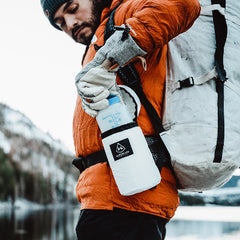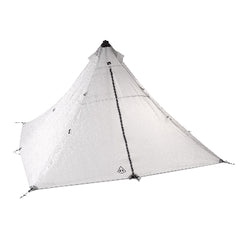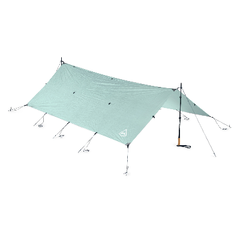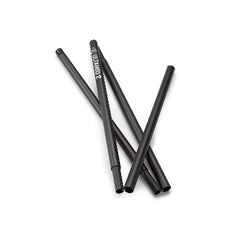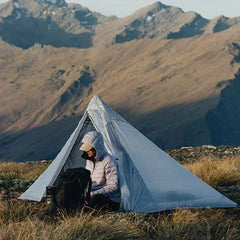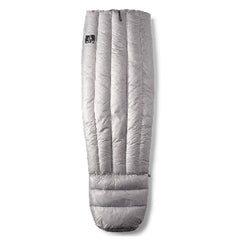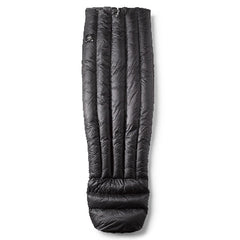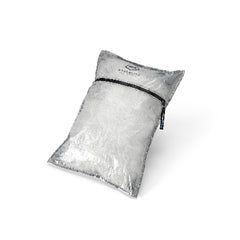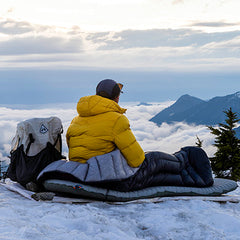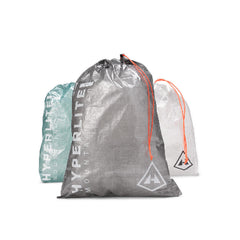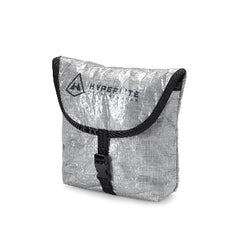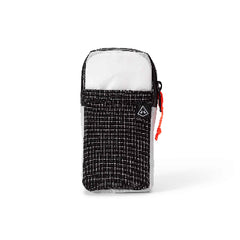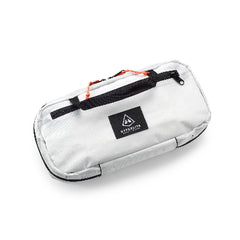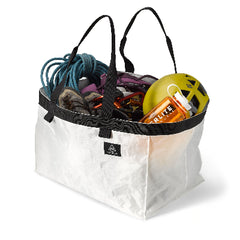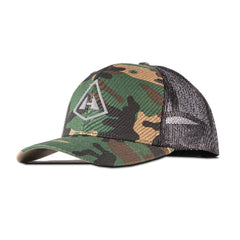Words by Nelson Brown, Photos by Nelson Brown

My paddling career started in 2019, guiding multi-day sea kayak trips in Kenai Fjords National Park. The rugged coastline, temperate rainforest, and misty days had drawn me to Alaska—I’ve always been pulled to that kind of environment, especially through the lens of photography.


Packrafting didn’t enter the picture until the end of my first season, during an end-of-summer trip to Maclaren Glacier in the interior. We paddled easy, braided rivers from the toe of the glacier, and I fell in love. It was true choose-your-own-adventure—picking lines through gravel bars, eddies, shifting channels, and having to walk your raft when your channel ran out of deep water. The fact that you could carry such a capable boat into the middle of nowhere and link up terrain like that blew my mind. Listening to stories from my co-guides and sketching out future routes, I could feel a new favorite adventure tool being added to my kit.
 After that trip, I started following Luc Mehl and his packrafting content. The way he blended mountain travel with river travel made something click. As a photographer, the idea of combining two modes of movement to access remote, hard-to-reach places felt like the ultimate storytelling tool. One line stuck with me and never left: “Alaska has a lot of water, and all of a sudden every blue line on the map became a trail.” That quote opened something up in my brain—and I haven’t looked at a topo map the same way since.
After that trip, I started following Luc Mehl and his packrafting content. The way he blended mountain travel with river travel made something click. As a photographer, the idea of combining two modes of movement to access remote, hard-to-reach places felt like the ultimate storytelling tool. One line stuck with me and never left: “Alaska has a lot of water, and all of a sudden every blue line on the map became a trail.” That quote opened something up in my brain—and I haven’t looked at a topo map the same way since.
When I moved back east, my packraft came with me. I started running whitewater more often—the Mad River in Vermont (where I live currently), spring melt runs, annual dam releases, and last summer, my first Class IV on the Kennebec Gorge (yes, I swam on Magic). But something felt off. Packrafts are made for creative, human-powered movement. And while whitewater brought the thrill and progressed my abilities, it was missing the bigger, exploratory element. I wanted to string something together on a multi-day trip, less like a single push where I was doing hotlaps from a car shuttle.
These days, I work as the Content Manager and Lead Photographer at Ibex Wool. I’ve stepped away from guiding full-time, but I still spend a lot of time in the field—testing gear, chasing stories, and documenting the kind of multi-sport adventures that made me fall in love with packrafting in the first place.
That’s when I reached out to my friend Alejandro Strong, founder of Packraft Maine. Alejandro has spent over two decades exploring Maine’s rivers and forests. He started guiding canoe and backpacking courses with Hurricane Island Outward Bound, later training staff in whitewater safety. Today, his focus is on human-powered travel—packrafting and bikerafting through Maine’s wild spaces—with an emphasis on delight, connection, and wildness close to home.
What I love about doing trips with Alex is that he never takes it all too seriously. Packrafting is inherently a little ridiculous—tiny inflatable boats, dynamic terrain, constant transitions—and Alex leans into that in the best way. It’s fun, it’s goofy, and it reminds you that outdoor adventure doesn’t always have to be epic to be meaningful. We’d done a trip together before around his home in Bangor, looping a bikerafting route. It was the definition of a microadventure—short, creative, and just ridiculous enough to be unforgettable.
 ABOUT THE ROUTE
ABOUT THE ROUTE
We really liked the idea of doing a loop—no car shuttle and no backtracking. With everyone juggling work schedules, we knew we only had three days. This ~28-mile route in the Debsconeag Lakes Wilderness offered exactly what we were looking for: bushwhacking through thick forest, hiking a stretch of the Appalachian Trail, and paddling across both big open lakes and smaller, quieter ones. It’s a choose-your-own-adventure kind of terrain, and that variety is what makes it so fun.
Alejandro had been eyeing this route for a while, but it was tough to find the right crew—most guided clients aren’t usually looking to combine this much hiking with their paddling. Early May was the perfect window. We fully expected not to see anyone out there—and aside from one confused angler watching us portage fully inflated packrafts on our backpacks from 4th Debsconeag Lake to Nahmakanta, we didn’t. Quiet trails, still lakes, and NO bugs made for an unbeatable backcountry experience.
THE CREW
This trip was a chance to test unreleased gear, capture story-driven content, and see how our Ibex layers held up across hiking, paddling, and everything in between.




 I’d worked with Patrick from Hyperlite Mountain Gear before, and as soon as I told him about the route, he was in. His eye for story and appetite for adventure made it an easy call. He brought along Ethan and Victoria from the Hyperlite R&D team, who were excited to get some fresh gear into the field and trade the office for the backcountry. It was the kind of crew you want on a trip like this—curious, capable, adaptable, and down to problem-solve when things get challenging.
I’d worked with Patrick from Hyperlite Mountain Gear before, and as soon as I told him about the route, he was in. His eye for story and appetite for adventure made it an easy call. He brought along Ethan and Victoria from the Hyperlite R&D team, who were excited to get some fresh gear into the field and trade the office for the backcountry. It was the kind of crew you want on a trip like this—curious, capable, adaptable, and down to problem-solve when things get challenging.
We met up with Alejandro at his house on Sunday afternoon. The usual pre-trip chaos unfolded—gear explosions in the driveway, splitting up group equipment, the classic pack-and-repack routine. We ran through the route one more time, talked contingencies, then grabbed a round of beers at Orono Brewing. A proper sendoff.
 One big question mark was Rainbow Lake—specifically, whether it was still frozen. Maine had a long, cold winter (woohoo!), and Moosehead Lake had only just iced out. Alejandro had checked satellite imagery a couple days earlier and it looked like there was still some ice up there. If so, we’d need drysuits, which meant more bulk and more logistics. It was going to be a game time decision in the morning.
One big question mark was Rainbow Lake—specifically, whether it was still frozen. Maine had a long, cold winter (woohoo!), and Moosehead Lake had only just iced out. Alejandro had checked satellite imagery a couple days earlier and it looked like there was still some ice up there. If so, we’d need drysuits, which meant more bulk and more logistics. It was going to be a game time decision in the morning.
DAY 1
Monday morning, we hit the road early and got to the trailhead with the sun in the sky.

 We decided not to bring the drysuits and took the risk of the ice being fully melted, or at least navigable. The hike along the Blue Trail to Rainbow Lake was mellow and full of early-season magic—sun coming through the trees just right.
We decided not to bring the drysuits and took the risk of the ice being fully melted, or at least navigable. The hike along the Blue Trail to Rainbow Lake was mellow and full of early-season magic—sun coming through the trees just right.
From a distance, the lake looked like it still had a skim of ice, and we all had that moment of quiet doubt. But as we got closer, it turned out to be a sun-glare fake-out—just light bouncing off the surface, not a frozen sheet. Once we reached the shore, we dropped packs, inflated boats, and launched. There was some ice clinging to the surface, but it was patchy and easy to paddle around.






 It made for a fun dynamic—threading little lines through the ice, testing gaps, and occasionally bumping our way through. It added a lighthearted puzzle element to the lake crossing that none of us expected. At one point, we stopped to hang out on a small island, only to realize the wind had shifted. Sheets of ice were slowly drifting in, surrounding us as we watched the gap we’d paddled through start to close up. It was kinda ridiculous—kinda funny, kinda oh shit.
It made for a fun dynamic—threading little lines through the ice, testing gaps, and occasionally bumping our way through. It added a lighthearted puzzle element to the lake crossing that none of us expected. At one point, we stopped to hang out on a small island, only to realize the wind had shifted. Sheets of ice were slowly drifting in, surrounding us as we watched the gap we’d paddled through start to close up. It was kinda ridiculous—kinda funny, kinda oh shit.
 We paddled to the southeast end of the lake and transitioned onto the Appalachian Trail. The trail was good at first but soon gave way to deep spring snow. We post-holed for a while, laughing less with each step, wondering if we’d need to reroute.
We paddled to the southeast end of the lake and transitioned onto the Appalachian Trail. The trail was good at first but soon gave way to deep spring snow. We post-holed for a while, laughing less with each step, wondering if we’d need to reroute.


 Eventually the snow gave way to moss and mud, and then came the bushwhack. Classic Maine: no trail, just deadfall, thick undergrowth, and a general sense of “I think this is the old logging road we are supposed to follow.” Muddy shoes, shredded legs, and that classic game of trying to find the best line through the mess while also holding branches so you didn’t whip the person behind you in the face. It was the kind of off-trail shuffle that somehow makes you laugh and swear at the same time.
Eventually the snow gave way to moss and mud, and then came the bushwhack. Classic Maine: no trail, just deadfall, thick undergrowth, and a general sense of “I think this is the old logging road we are supposed to follow.” Muddy shoes, shredded legs, and that classic game of trying to find the best line through the mess while also holding branches so you didn’t whip the person behind you in the face. It was the kind of off-trail shuffle that somehow makes you laugh and swear at the same time.



 We pushed through to 2nd Debsconeag Lake and camped for the night. A few of us squeezed in a cold dip with the last bit of light, laughing just as hard as we scrambled out—regretting not bringing a microfiber towel, but the freezing water felt kind of good on legs that had been sliced and whipped by branches all day. Dried gear slung over branches, warm food from our friends at Good To-Go, and then hitting the bag early. Wins all around.
We pushed through to 2nd Debsconeag Lake and camped for the night. A few of us squeezed in a cold dip with the last bit of light, laughing just as hard as we scrambled out—regretting not bringing a microfiber towel, but the freezing water felt kind of good on legs that had been sliced and whipped by branches all day. Dried gear slung over branches, warm food from our friends at Good To-Go, and then hitting the bag early. Wins all around.



 Day Two and Three
Day Two and Three
The weather turned. Rain, mist, and low clouds rolled in. We made fast transitions from 2nd, to 3rd to 4th Debsconeag Lake with the goal of not deflating our rafts and either carrying them or strapping them to our packs. Paddling through the stillness with loons calling in the morning mist was one of those small, grounding moments—conversations quieted, and we all just listened to the sounds of Maine woods.




 We made it to Nahmakanta—the biggest crossing of the trip.
We made it to Nahmakanta—the biggest crossing of the trip.
 If the wind had picked up, we would have had to hike around it. Luckily, it held off. We ate lunch quickly and set off again on the water to not test our luck with wind.
If the wind had picked up, we would have had to hike around it. Luckily, it held off. We ate lunch quickly and set off again on the water to not test our luck with wind.


 We hugged the northern shoreline, and then hiked to the Rainbow Stream Lean-to. Hungry, tired, and
We hugged the northern shoreline, and then hiked to the Rainbow Stream Lean-to. Hungry, tired, and stoked soaked.
 The next morning was socked in with fog, following a night of steady rain—we were hopeful the worst had passed.
The next morning was socked in with fog, following a night of steady rain—we were hopeful the worst had passed.
 At Rainbow Lake, the wind was calm, but the visibility was nonexistent. We paddled by GPS, pointing our bows into the fog, unable to see the opposite shoreline.
At Rainbow Lake, the wind was calm, but the visibility was nonexistent. We paddled by GPS, pointing our bows into the fog, unable to see the opposite shoreline.



 One last transition, one final hike out—and just like that, we were back at the car.
One last transition, one final hike out—and just like that, we were back at the car.
We wrapped it up the right way: new clothes, hot food, and cold beers in Millinocket.
GEAR I BROUGHT
Boat + Paddle
- Alpacka Expedition (stripped down: no thigh straps or backrest)
- Alpacka Pack-a-Pump (clutch for inflating on the water)
- Werner 4-piece carbon paddle
- Kokatat PFD
- Hyperlite River Rescue Throw Bag
Pack System (Hyperlite Mountain Gear)
- Porter 85L pack
- CrossPeak 2 tent
- Side Entry Pods
- 40-Degree quilt
- Zippy pockets + Roll-Top Food Bag (used for snacks, first aid kit, paddle repair kit, and camera gear)
- Camera Pod (essential for keeping photo gear dry)
Ibex Layers
FINAL THOUGHTS
If you’re considering this route—or packrafting in general—just start. Talk to Alejandro at Packraft Maine. Do your research. Go with people who can laugh at their pruned-up feet.
The best multi-day trips aren’t about ticking off miles or posting epic shots. They’re about settling into the rhythm, embracing the weird moments, and not taking yourself too seriously. Having shorts weather energy even if it’s cold (inside joke). Because at the end of the day, the goal isn’t to move fast. It’s to move intentionally—through water, through woods, and through those quiet corners of the map where the wild still wins.
Maine’s backcountry has a depth of wilderness that’s hard to overstate. That’s what packrafting in Maine offers: a blank map, a few blue lines, and the chance to write your own route.


